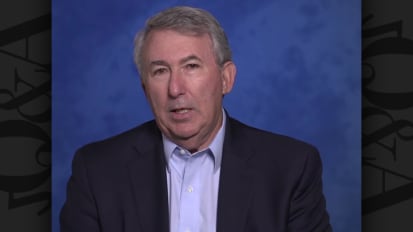Stanley Cohen, MD

Clinical Professor
Department of Internal Medicine
UT Southwestern Medical Center
Co-Director of the Division of Rheumatology
Presbyterian Hospital
Dallas, Texas

Clinical Professor
Department of Internal Medicine
UT Southwestern Medical Center
Co-Director of the Division of Rheumatology
Presbyterian Hospital
Dallas, Texas
Related Videos
 Video
Video
Based on your current assessment of anti-TNF biosimilars, what is the optimal trajectory of these agents in the setting of RA and related immune-related conditions?
 Video
Video
Based on the available data for clinical equivalency and switching, can you discuss how rheumatologists and pharmacists should make clinical decisions when choosing between biosimilars and their reference biologic agents in the setting ...
 Video
Video
Can you explain current policy guidance as it relates to biosimilars, including considerations that do or do not apply to interchangeability for anti-TNF biosimilars and product naming guidelines? What is the threshold for interchangeability?
 Video
Video
When trying to assess the data and clinical rationale for switching from an originator anti-TNF to a biosimilar, it appears that the single switch data is convincing in supporting the efficacy, safety, and comparable immunogenicity of ...
 Video
Video
What have we learned about the equivalency and outcome-based efficacy of biosimilars within the context of a “single switch” between the originator and biosimilar, including the NOR-SWITCH study; and what are the implications for clinical practice?
 Video
Video
Can you compare, based on published RA trials, both the clinical efficacy/equivalency and adverse side effects that have been reported with administration of the anti-TNF biosimilar versus the originator product, infliximab? And how do ...
 Video
Video
Can you discuss and explain the study design, rationale, results, and practical clinical implications of the most recent clinical evidence focused on anti-TNF inhibitor biosimilars for infliximab in the setting of RA; and by extrapolation, ...
 Video
Video
How do regulatory approval and evaluation processes for biosimilars differ from those used for small-molecule generic medications? Can you differentiate these processes based on the specific steps of the approval process; including structural ...
 Video
Video
How do regulatory approval and evaluation processes for biosimilars differ from those used for small-molecule generic medications?